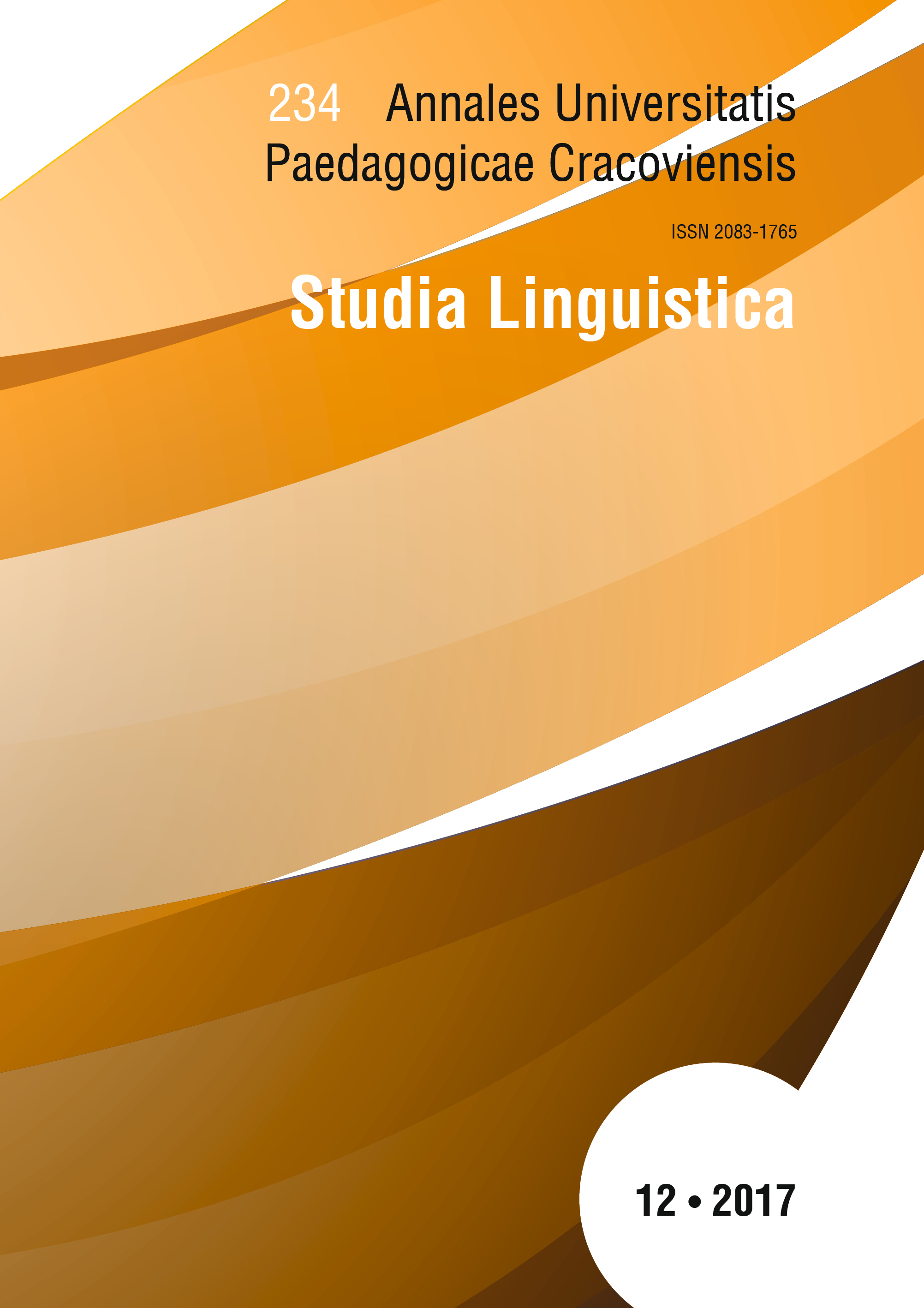Jeszcze o aoryście w staropolszczyźnie
Main Article Content
Abstrakt
An analysis of examples of the past perfect tense composed of a singular and plural past tense participle and an aorist form of the ‘to be’ verb in the singular third person form used as an auxiliary word is given in the article. The author, referring to the research of W.R. Rzepka, presents three consecutive examples from the mediaeval court oaths, where the aorist by has the meaning of ‘był’ (past form of the to be verb in Polish).
Downloads
Article Details
Autor, zgłaszając tekst do redakcji czasopisma „Annales Universitatis Paedagogicae Cracoviensis. Studia Linguistica”, zaświadcza, iż jest on rezultatem wyłącznie jego własnej twórczości, że treść artykułu nie była dotychczas publikowana oraz że utwór nie narusza w żadnym stopniu praw autorskich ani praw pokrewnych innych osób, jak również innych praw osób trzecich, a także, że niczyje prawa do utworu (lub jego jakiejkolwiek części) nie zostały pominięte. Po podpisaniu umowy prawa majątkowe do opublikowanych materiałów zostają przeniesione na Wydawnictwo Naukowe Uniwersytetu Komisji Edukacji Narodowej w Krakowie.
Rocznik „Annales Universitatis Paedagogicae Cracoviensis. Studia Linguistica” to czasopismo o otwartym dostępie, a cała jego zawartość jest udostępniana bezpłatnie dla użytkowników i instytucji na zasadach licencji Creative Commons CC-BY-NC-ND 4.0 (uznanie autorstwa, użycie niekomercyjne, bez utworów zależnych). Na podstawie tej licencji autorzy zgadzają się, że ich prace mogą być zgodnie z prawem ponownie wykorzystywane do jakichkolwiek celów, za wyjątkiem celów komercyjnych, bez konieczności uzyskania uprzedniej zgody ze strony autora lub wydawcy. Każdy może prace te czytać, pobierać, kopiować, drukować, rozpowszechniać oraz przetwarzać, pod warunkiem poprawnego oznaczenia autorstwa oraz oryginalnego miejsca publikacji. Publikowanych tekstów nie można wykorzystywać do tworzenia utworów zależnych (np. do tłumaczenia ich i publikowania w innym języku bez zgody wydawcy). Jest to zgodne z definicją otwartego dostępu BOAI (Budapest Open Access Initiative) „Studia Linguistica”nie pobiera opłat za składanie artykułów ani ich przetwarzanie.
Autor, przesyłając artykuł do redakcji „Studia Linguistica”, bezwględnie zgadza się z poniższymi punktami:
-
Oświadczam, że jestem Autorem lub Współautorem nadesłanego tekstu. Przesłany tekst nie był nigdzie publikowany, jest całkowicie oryginalny i nie narusza w żadnym stopniu praw autorskich ani praw pokrewnych innych osób, jak również innych praw osób trzecich, a także, że niczyje prawa do utworu nie zostały pominięte.
-
Oświadczam, że nadesłany tekst nie został złożony do recenzji lub/i publikacji w innym czasopiśmie.
-
Przyjmuję do wiadomości, że Autor ponosi pełną odpowiedzialność za każdy przypadek plagiatu, niezależnie od tego, czy został on wykryty podczas procesu recenzji, czy po publikacji w „Studia Linguistica”.
-
Oświadczam, że ponoszę pełną odpowiedzialność finansową i prawną za wszelkie roszczenia związane z utworem.
-
Potwierdzam uznanie wszystkich źródeł danych wykorzystanych i cytowanych w badaniach.
-
Potwierdzam, że artykuł został wykonany z należytą starannością zgodnie ze standardami edytorskimi „Studia Linguistica”.
Bibliografia
Łoś J., 1927, Gramatyka polska. Cz. 3: Odmiennia (fleksja) historyczna, Lwów.
Google Scholar
Gebauer J., 1909, Historická mluvnice jazyka českého, díl III: Tvarosloví, II: Časování, vydání druhé, Praha.
Google Scholar
Rzepka W.R., 2001, Glosa do staropolskiego czasu zaprzeszłego z aorystycznym słowem posiłkowym, [w:] Studia Historycznojęzykowe nr 26. Prace Językoznawcze UŚ, Katowice, s. 202–211.
Google Scholar
Kowalewicz H., Kuraszkiewicz W. (red.), 1959–1981, Wielkopolskie roty sądowe XIV–XV wieku, t. I–V, Poznań–Warszawa–Wrocław.
Google Scholar
Twardzik W. i in., 2005, Opis źródeł Słownika staropolskiego, Kraków.
Google Scholar
Rzepka W.R., Twardzik W., 1997, Archaizmy fleksyjne w „Rozmyślaniu przemyskim”. 3. Formy z aorystycznym „by” (3. os. lp. czasownika „być”), „Język Polski” LXXVII, s. 41–46.
Google Scholar
